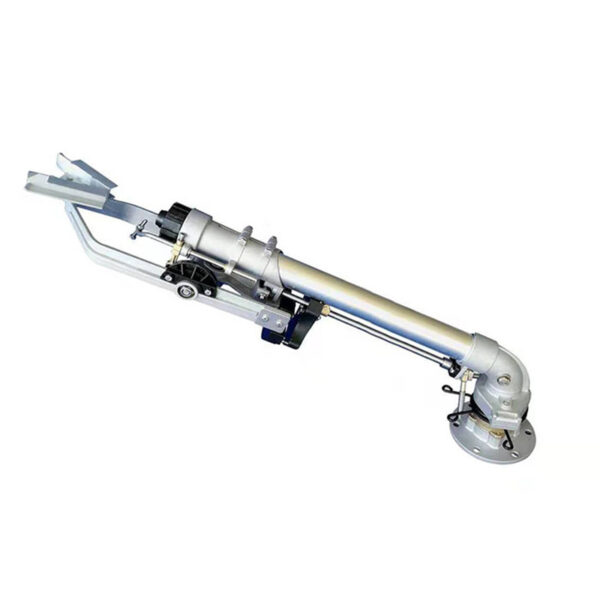How does a garden drip irrigation affect the growth rate of plants compared to traditional watering methods?
Drip irrigation in garden settings often leads to notable differences in plant growth rates compared to traditional watering methods:
- Consistent Moisture: Drip irrigation delivers water directly to the root zone in a slow, steady manner. This consistency in moisture levels supports more even and continuous plant growth compared to traditional watering, which can sometimes result in fluctuating moisture levels.
- Reduced Stress: Plants watered through drip irrigation experience less stress due to consistent moisture. Traditional methods like overhead watering or manual hose watering can lead to water stress as the plants might receive too much or too little water at different times.
- Root Development: Drip irrigation encourages healthy root development by consistently providing moisture to the root zone. This often results in stronger and deeper root systems compared to traditional methods, which might lead to shallow rooting due to uneven watering.
- Minimized Foliar Diseases: Drip irrigation reduces moisture on the foliage, decreasing the likelihood of foliar diseases compared to traditional methods where leaves might remain wet for extended periods after watering.
- Water and Nutrient Efficiency: Drip irrigation systems are more efficient in water usage compared to many traditional methods. They also allow for efficient nutrient application directly to the root zone, promoting better nutrient uptake and growth.
- Weed Control: By delivering water directly to the plant’s root zone, drip irrigation reduces moisture in between plants, making it less conducive for weed growth compared to traditional methods that might water the entire garden area.
- Adaptability to Plant Needs: Drip irrigation systems can be customized to suit different plant types and their specific watering needs. This adaptability ensures that each plant receives the appropriate amount of water, fostering optimal growth.
While both methods can support plant growth, drip irrigation often leads to more efficient water usage, healthier root systems, reduced stress on plants, and better control over water delivery, resulting in improved growth rates and overall plant health compared to traditional watering methods.
What maintenance is required for a garden drip irrigation?
Maintaining a garden drip irrigation system is essential to ensure its proper functioning and longevity.
Here are some maintenance tasks typically required:
- Regular Inspection: Periodically check the entire system for leaks, clogs, or damaged components. Look for any signs of wear and tear, including cracks in hoses, damaged emitters, or loose fittings.
- Clearing Clogs: Clear clogs from emitters, filters, or tubing. Use a pin or small tool to remove debris that might obstruct the flow of water. Flushing the system or using cleaning solutions specifically designed for irrigation systems can help prevent clogging.
- Adjustment and Repair: Ensure all emitters and drippers are working properly and are positioned correctly to water the intended areas. Repair or replace any damaged or malfunctioning components promptly.
- Monitor Water Pressure: Check water pressure regularly to ensure it’s within the recommended range for the system. High or low pressure can affect the performance of the drip irrigation system.
- Filter Maintenance: Clean or replace filters regularly to prevent clogging and ensure the proper flow of water. This is particularly important if your water source contains sediments or debris.
- Seasonal Adjustments: Adjust the watering schedule based on seasonal changes in weather, temperature, and plant requirements. china garden drip irrigation Plants may need more or less water during different seasons.
- Winterization: In colder climates, properly winterize the system to prevent damage from freezing temperatures. This may involve draining water from the system, insulating pipes, or removing and storing components indoors.
- Soil and Plant Monitoring: Regularly check soil moisture levels to ensure plants are receiving adequate water. Monitor plant health to identify any signs of overwatering or underwatering.
- Professional Maintenance: Consider scheduling professional maintenance or inspections annually, especially for larger or more complex systems. Professionals can identify issues and perform in-depth checks that ensure the system’s efficiency.
- Documentation and Records: Keep records of maintenance activities, repairs, and any adjustments made to the system. This helps track the system’s performance and facilitates troubleshooting if issues arise.
Regular and proactive maintenance of garden drip irrigation systems is crucial for optimal performance, water efficiency, and the health of your plants. By staying attentive to the system’s needs and addressing issues promptly, you can ensure a thriving garden while prolonging the lifespan of the irrigation setup.

Comments are Disabled